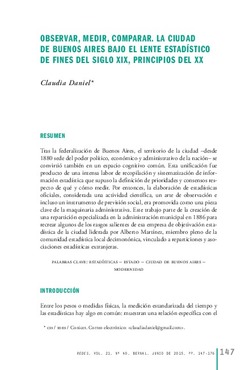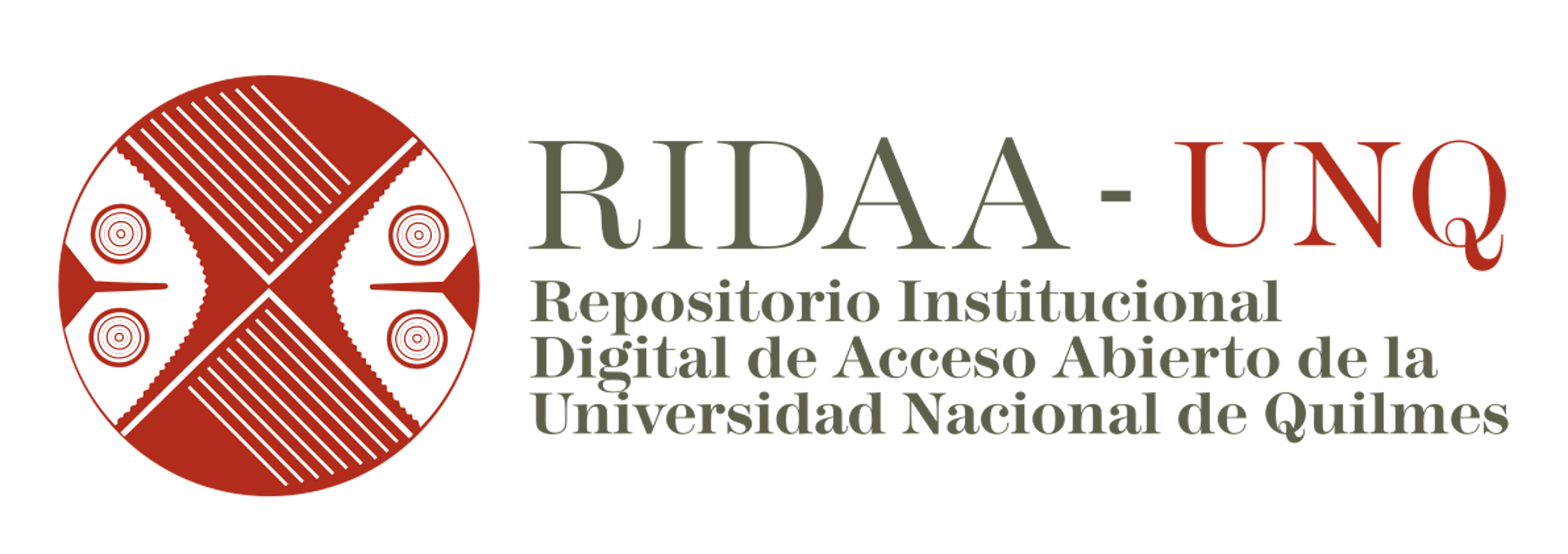Observar, medir, comparar : la ciudad de Buenos Aires bajo el lente estadístico de fines del siglo XIX, principios del XX
Observing, measuring, comparing : Buenos Aires under the statistical lens in the late 19th and early 20th centuries

Ver/
Fecha
2015-06Autor
Daniel, ClaudiaResumen
Tras la federalización de Buenos Aires, el territorio de la ciudad –desde 1880 sede del poder político, económico y administrativo de la nación– se convirtió también en un espacio cognitivo común. Esta unificación fue producto de una intensa labor de recopilación y sistematización de información estadística que supuso la definición de prioridades y consensos respecto de qué y cómo medir. Por entonces, la elaboración de estadísticas oficiales, considerada una actividad científica, un arte de observación e incluso un instrumento de previsión social, era promovida como una pieza clave de la maquinaria administrativa. Este trabajo parte de la creación de una repartición especializada en la administración municipal en 1886 para recrear algunos de los rasgos salientes de esa empresa de objetivación estadística de la ciudad liderada por Alberto Martínez, miembro pleno de la comunidad estadística local decimonónica, vinculado a reparticiones y asociaciones estadísticas extranjeras. After the proclamation of the city of Buenos Aires as Nation’s capital –as well as its political, economical and administrative centre–, the territory of the city also became a common cognitive space. This unification was the result of an intensive and systematic collection of statistical information that lay on the definition of priorities and consensus regarding what and how to measure. By then, the production of official statistics, considered a scientific activity, an art of observation and even an instrument of social forecast, was promoted as a key part of the state machinery. This paper begins with the creation of a specialized bureau in city administration (1886) and then describes some of the main aspects of the statistical enterprise, led by Alberto Martínez, full member of the local nineteenth-century statistical community, linked to foreign statistics departments and associations.
